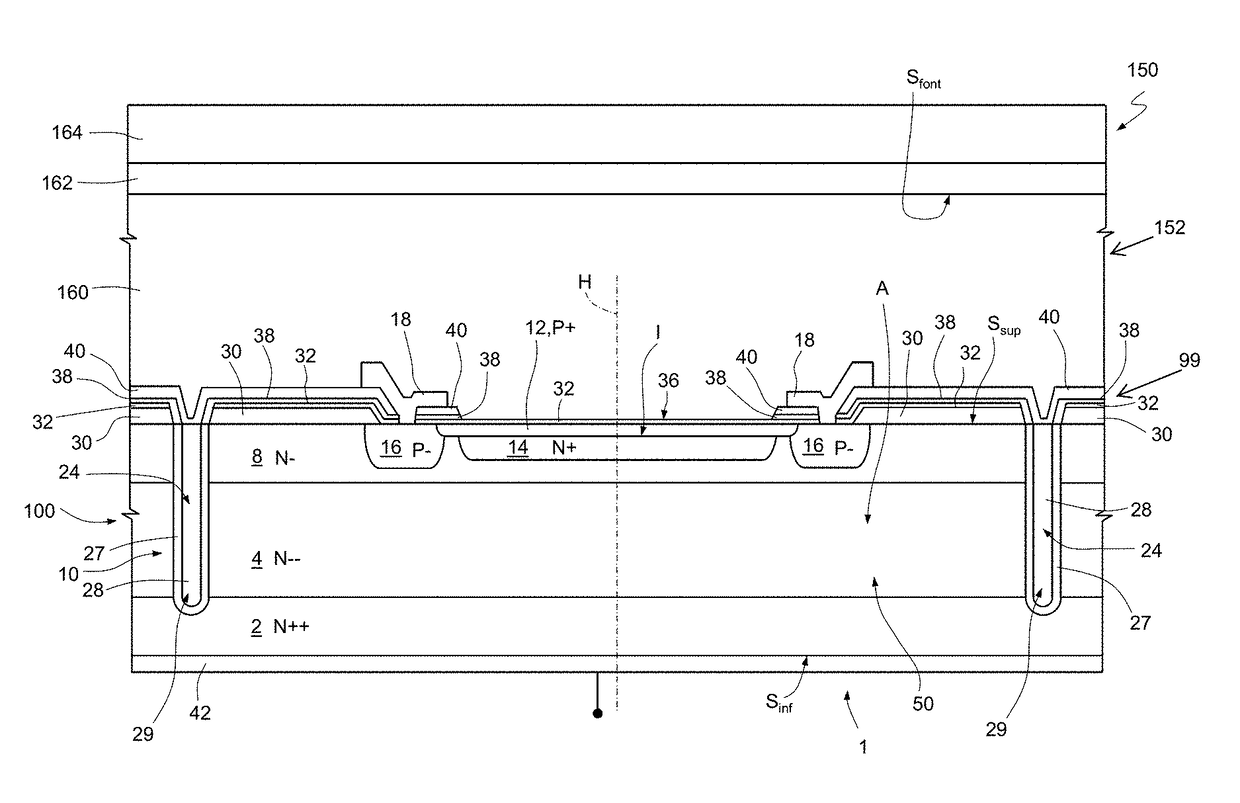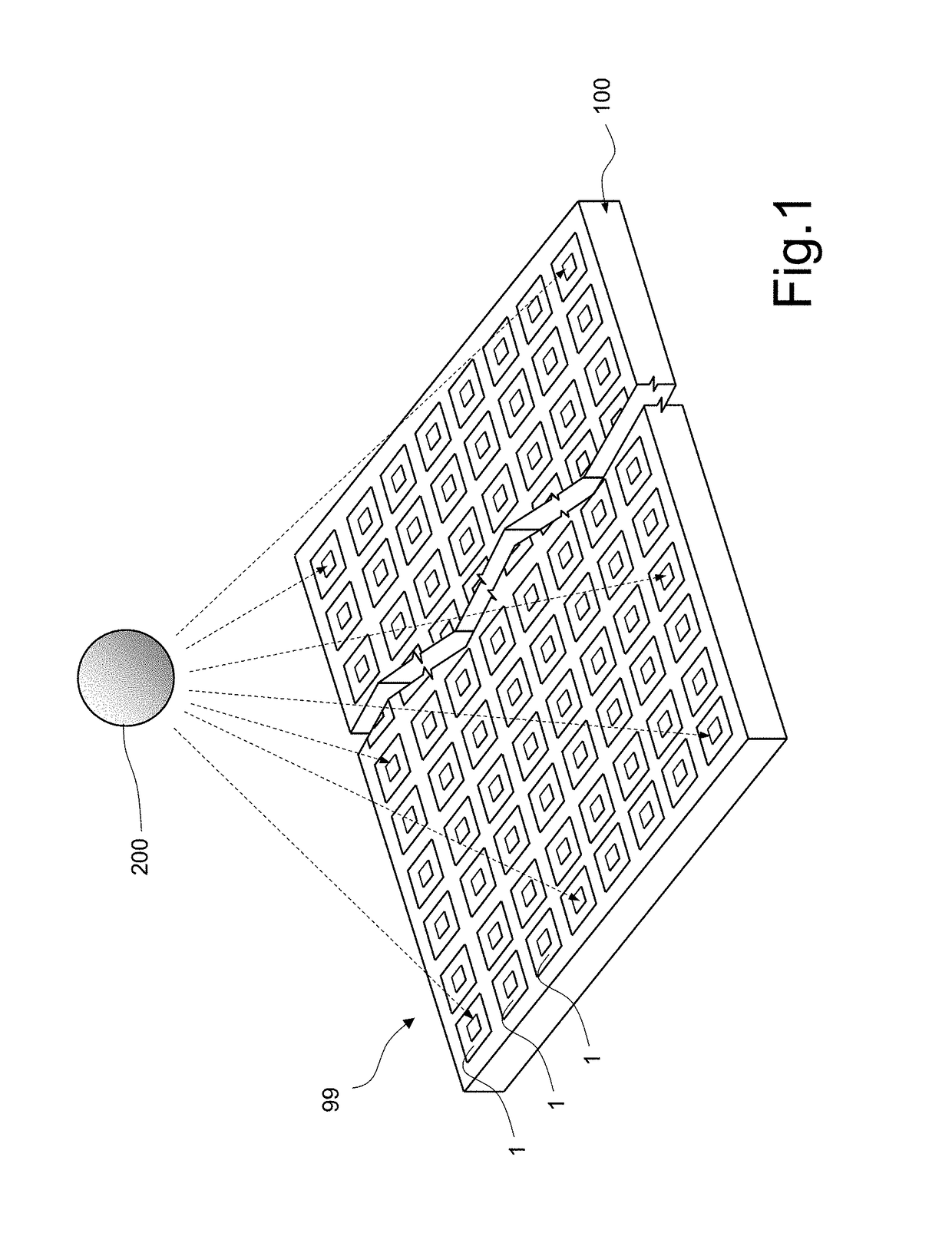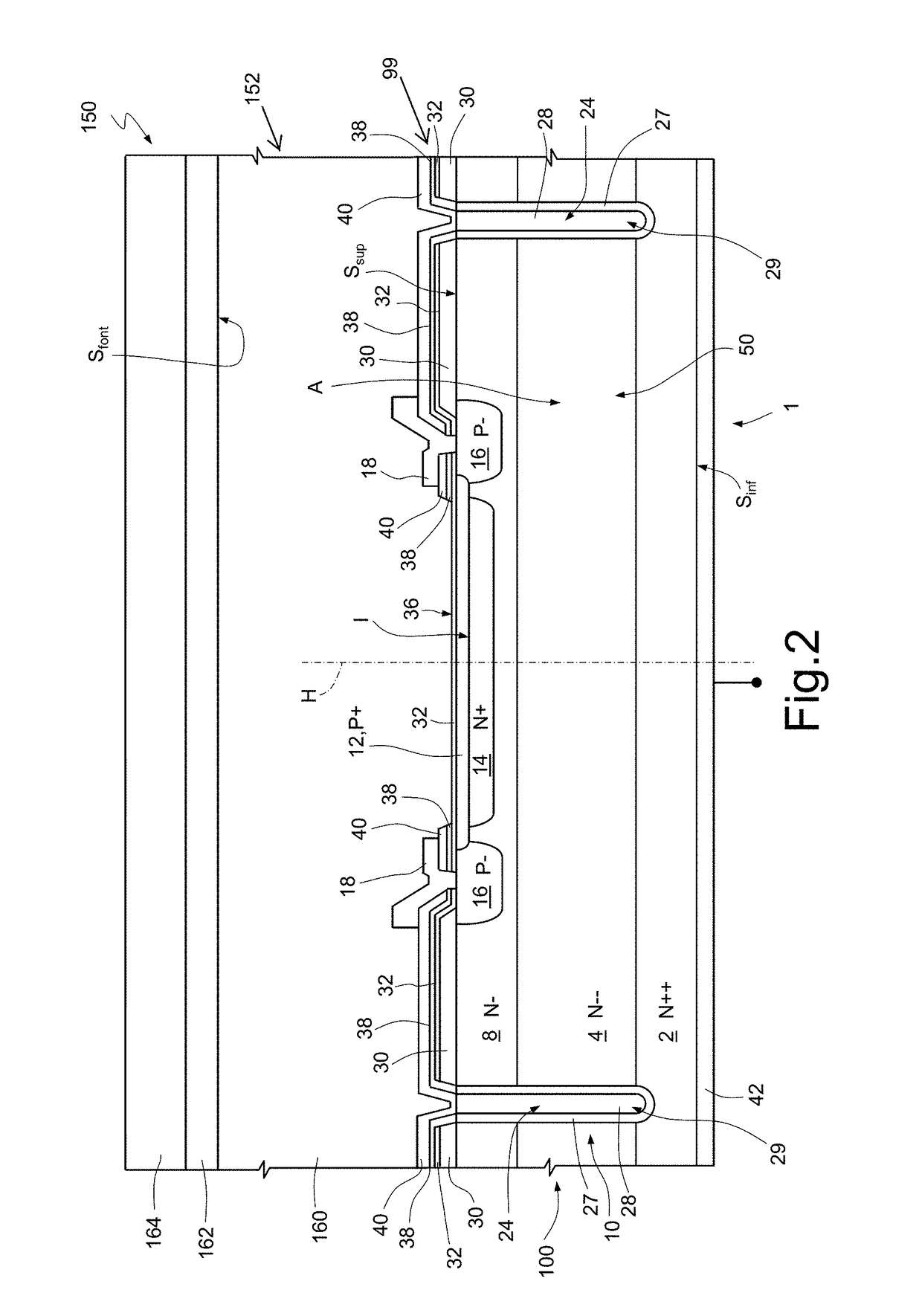Array of geiger-mode avalanche photodiodes for detecting infrared radiation
a geiger-mode avalanche and photodiode technology, applied in the field of geiger-mode avalanche photodiodes for detecting infrared radiation, can solve the problems of inability to detect photons, undesirable increase of dark current, and limited sensitive areas of arrays used in the context of infrared radiation detection
- Summary
- Abstract
- Description
- Claims
- Application Information
AI Technical Summary
Benefits of technology
Problems solved by technology
Method used
Image
Examples
Embodiment Construction
[0023]FIG. 1 shows an embodiment of an array 99 of SPADs 1, which are arranged in planar fashion and are illuminated by a light source 200. The array 99 may comprise any number of SPADs 1, according to the need. Further, the array 99 is integrated in a die 100, which, as shown in FIG. 2 (which is not in scale), comprises a semiconductor body 10 made, for example, of silicon.
[0024]Purely by way of example, the semiconductor body 10 comprises a substrate 2, which is delimited at the bottom and at the top by a bottom surface Sinf and a top surface Ssup, respectively. Further, the semiconductor body 10 comprises a first epitaxial layer 4 and a second epitaxial layer 8.
[0025]The substrate 2 is of an N++ type, has a thickness, for example, of between 300 μm and 500 μm and has a doping level, for example, of between 1·1019 cm−3 and 5·1020 cm−3. Further, the substrate 2 forms the aforementioned bottom surface Sinf.
[0026]The first epitaxial layer 4 is of an N−− type, has a thickness, for exa...
PUM
 Login to View More
Login to View More Abstract
Description
Claims
Application Information
 Login to View More
Login to View More - R&D
- Intellectual Property
- Life Sciences
- Materials
- Tech Scout
- Unparalleled Data Quality
- Higher Quality Content
- 60% Fewer Hallucinations
Browse by: Latest US Patents, China's latest patents, Technical Efficacy Thesaurus, Application Domain, Technology Topic, Popular Technical Reports.
© 2025 PatSnap. All rights reserved.Legal|Privacy policy|Modern Slavery Act Transparency Statement|Sitemap|About US| Contact US: help@patsnap.com



